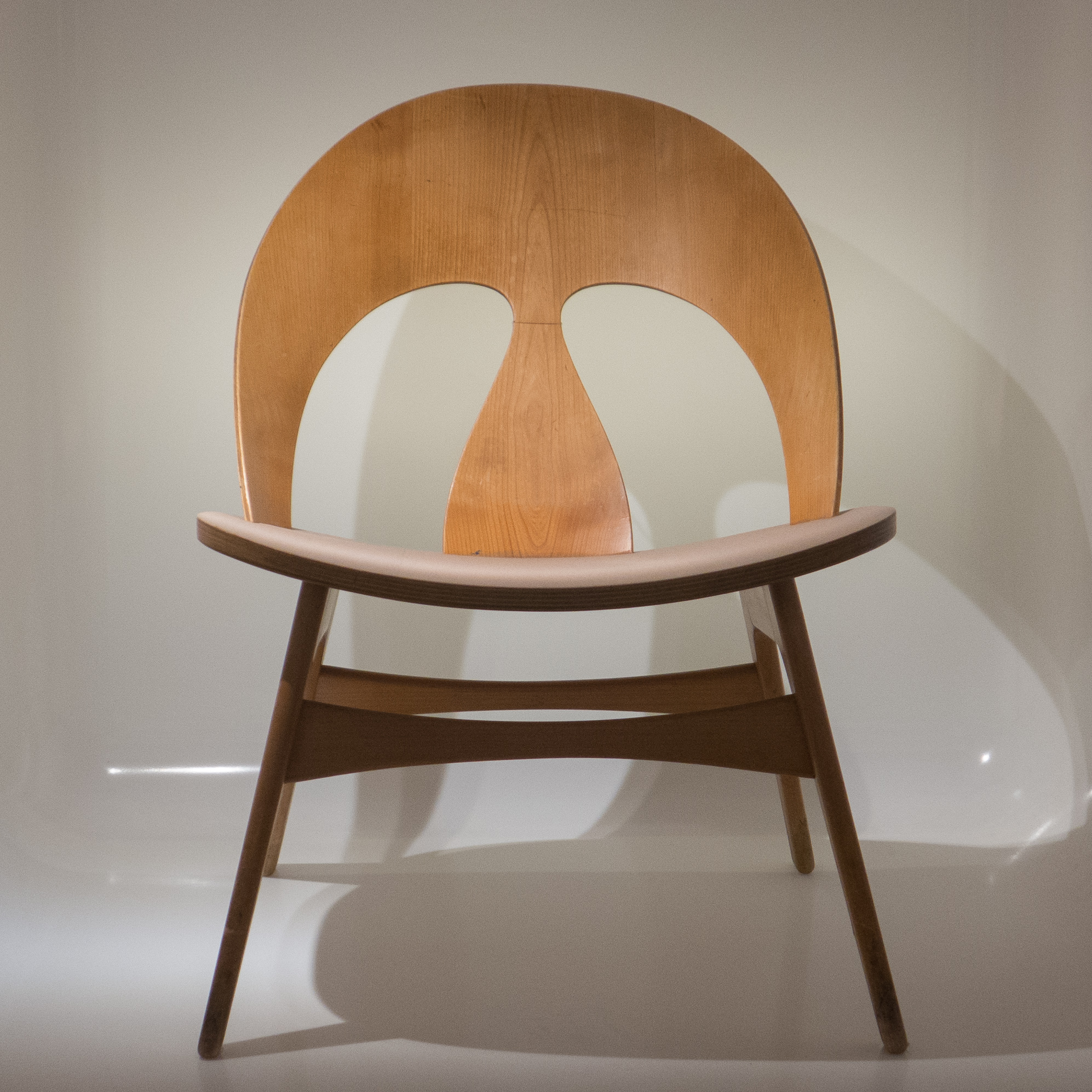arm chair by Børge Mogensen and Lis Ahlmann 1941
/
Through the 1930s and well into the 1940s furniture designers produced chairs that took as a starting point the square set frame of legs and stretchers and upholstered seat and back of the Chippendale type or 'Red Chair' type by Kaare Klint.
This example by Børge Mogensen and Lis Ahlmann dates from 1941 shows that, although more organic and rounded forms of chair by Finn Juhl or Hans Wegner dominate our view of post-war Danish chair design, this more traditional chair type has a distinct place in the evolution of modern Danish chair design.
Note the L-shaped wood arm rest fixed to the outer face of the side rail of the seat, half way along, and to the outer edge of the fully-upholstered back rest, about half way up. The upholstery is over a traditional cross basket weave of textile webbing with, presumably, a layer of horsehair padding. The inner edges of the legs are finished with a pronounced chamfer - to reduce the visual weight of the leg - and the chamfer runs out properly at the top, just below the point where the rails of the seat are housed into the legs.
A small arm chair very like this was first shown by Morgensen at the Cabinetmakers' Exhibition in 1939 but what is much more interesting is that these formal and more traditional designs seem to mark the end of his training and a point of change because he started to work for FDB - the Danish Co-operative - in 1942 and his designs for furniture made for them evolved rapidly so he produced simple and well-made chairs of very different forms for a much broader range of customer.
Chippendale stole / Chippendale chairs
designed by Børge Mogensen (1914-1972) and Lis Ahlmann (1894-1979)
made in teak by the cabinetmaker Ove Lander
the chair was shown at the Cabinetmakers' Exhibition in 1941





